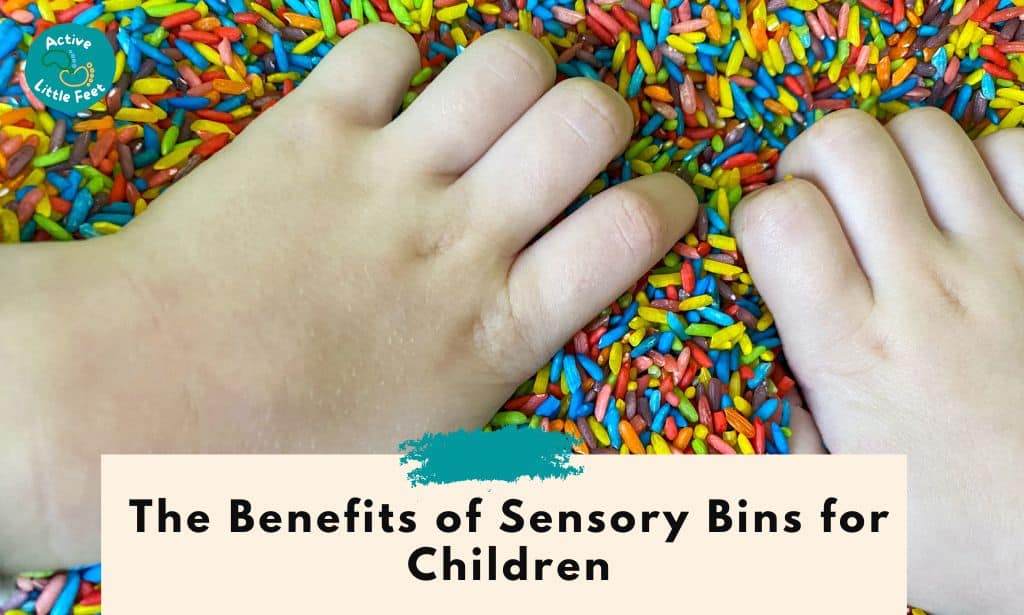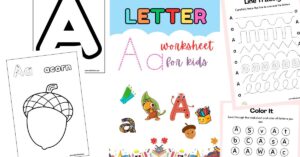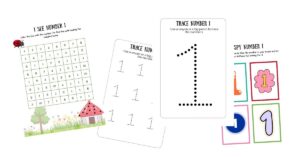Young children understand their environment by engaging their senses. That is why sensory play is crucial to their early childhood development. One of the best ways parents and educators encourage sensory play is with a sensory bin.
- What is a Sensory Bin?
- Benefits of Sensory Bins
- 1. Children Explore All Their Senses
- 2. Your Child Will Develop Social Skills
- 3. Sensory Bins Improve your Child’s Motor Skills
- 4. Sensory Bins Encourage Language Development
- 5. Your Child Will Learn How to Self-Regulate
- 6. Your Child Will Learn Basic Math and Physics Concepts
- 7. Sensory Bins Improve Your Child’s Imagination
- How to Ensure a Sensory Bin is Safe for Your Child
- Are Sensory Bins Only for Toddlers?
What is a Sensory Bin?
A sensory bin is a large container or tub filled with several objects carefully chosen to stimulate children’s senses. Popular sensory bin fillers include sand, beans, dry rice, leaves, feathers, water, and soap foam. Parents also add household items like spoons, containers, cups, and toys.
Using sensory bins can be messy, but it is worth it once you learn about the benefits.

Benefits of Sensory Bins
1. Children Explore All Their Senses
When playing with a sensory bin, children engage all their senses, touch, smell, taste, and sound. They learn that different objects have different textures and make various sounds. For example, materials like rice make a light, delicate sound compared to beans and other large items.
If your sensory bin is full of water, they will learn that some objects float and others sink. Furthermore, mixing the water with cornstarch encourages more experimentation and water play. This article teaches how water play encourages sensual learning and emotional development.
But remember, young children like to explore by putting things in their mouths. Using choke-safe and taste-safe fillers is vital if your children are at this stage. For example, essential oils are toxic when ingested, so you can’t use them to stimulate your child’s sense of smell.
2. Your Child Will Develop Social Skills
Encourage children to play with their siblings or friends in the sensory bin. This teaches them to play cooperatively and learn teamwork, taking turns, sharing, and communication skills. Cooperative play also encourages children to learn from each other by inventing new ways to play and other creative solutions.
3. Sensory Bins Improve your Child’s Motor Skills
Regardless of your filler selection, children will enjoy picking up and digging into the sensory bin, and that improves their fine motor skills. Tools like tweezers, funnels, and spoons encourage kiddos to scoop, stir, dig, and pour items in the sensory bins.
These activities will help your child improve their grasp, helping them develop skills like handling utensils to feed themselves and handwriting. You can read more about improving your child’s grip in this article.

4. Sensory Bins Encourage Language Development
Your child will expand their vocabulary as they play with their friends and siblings or when you engage them during play. They will learn simple concepts like soft, hard, full, empty, etc. It gets better when they start digging into the filler to look for hidden objects. Another way your child will improve their vocabulary is by encouraging them to describe to you their actions as they play.
5. Your Child Will Learn How to Self-Regulate
Sensory bins help children become more aware of their bodies because they use their senses. For example, they will learn that they smell through their nose and hold things with their hands. Your child will relate some objects with motion and balance. For example, water and sand will flow through their fingers.
Sensory bins are also a great way to calm your kids when overstimulated. Things like play dough and fidgets are great stress relievers for kids. This relaxing quality of sensory bins will also encourage your child to play independently. They will play with the sensory bin to self-soothe whenever they feel upset.
6. Your Child Will Learn Basic Math and Physics Concepts
Whether you use a liquid or dry filler in the sensory bin, your child will learn physics concepts like sinking, floating, gravity, and more. For example, with a liquid sensory bin, they will know that heavy things will sink to the bottom and lighter items will float. They will also learn that some things dissolve in water and others do not.
Adding measuring cups and small or big containers will also introduce your child to basic math concepts. For example, filling a big cup or container will take more sand than a small one. Your child will also learn to count and sort different objects in the sensory bin.

7. Sensory Bins Improve Your Child’s Imagination
Sensory bins improve your child’s imagination through pretend play. According to experts, pretend play is crucial for early childhood development. The sensory bins are child-centered, meaning your child imagines the situations and determines the different task outcomes.
Pretend play also allows your child to practice their communication skills and storytelling. When they create situations, they build storylines which also helps them practice their language and expand their vocabulary.
How to Ensure a Sensory Bin is Safe for Your Child
Since toddlers and preschoolers usually use sensory bins, they must be supervised during play. Supervision is essential for children who like to put things in their mouths. Here are other sensory bin safety tips you should practice.
- Avoid using fillers or objects that are potential choking hazards. You can use a tube to test whether various items can choke your child, especially if they are small, round, or elliptically shaped.
- Ensure all items used in the sensory bin are non-toxic. This prevents your child from ingesting hazardous chemicals.
- Avoid using flour as a filler because your child can breathe it in and compromise their breathing.
- Use sterilized sand or kinetic sand, which is made for kids.
Are Sensory Bins Only for Toddlers?
Any child above two years uses a sensory bin. It is safest when your child has stopped putting everything in their mouth. Children under two years can use a sensory bottle or a sensory bag.
If you want your toddler under two to use a bin, use taste-safe and edible materials as fillers. However, child experts discourage this because the possible hazards outweigh the benefits.
But don’t worry; we have alternative sensory activities that will keep your younger kids engaged. Read this article to discover fun leaf activities that stimulate several of your child’s senses.




